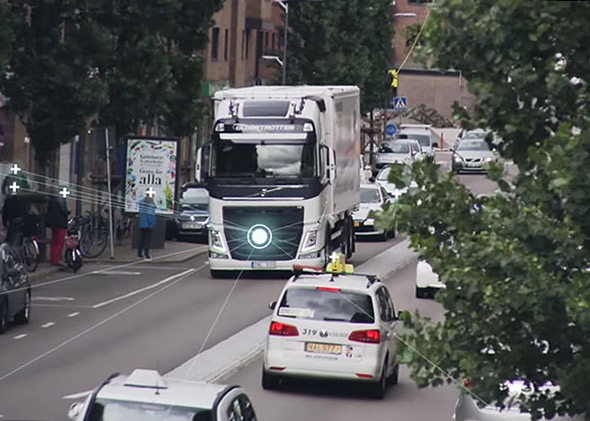Escape Routes
Volvo has a plan for avoiding wrecks.
Reprinted from 

Courtesy of Volvo/Wired
Volvo wants to stop anyone from getting seriously injured or killed in its new cars by 2020, but advanced air bags and blind-spot warning systems can only go so far. It needs cars that can detect, predict, and avoid trouble, all on their own.
The automaker is openly moving toward self-driving cars, and now it’s announced a new feature that will help it get there. In a few years, its cars will be equipped with computers that have a 360-degree view of their surroundings, constantly scanning and evaluating what’s going on and how to react if there’s trouble.
The “centralized Sensor Fusion framework” links onboard cameras, radar, lidar, GPS, and more. It was developed by the Non-Hit Car and Truck Project, a four-year partnership between Volvo Cars, Volvo Trucks (they’re totally separate companies—the passenger car shop is owned by China’s Geely), and a few technology suppliers and universities. The goal was to reduce accident risks for passenger cars and commercial vehicles.
The system, which is still at least five years from hitting showrooms, can detect potential accidents before they occur, even if they’re outside the driver’s line of sight. If an accident is imminent, the car can determine an “escape route” and auto-brake and even steer the car to avoid the accident. It’s the high-tech equivalent of Sylvester Stallone in that horrible movie Escape Plan: always looking for a way out of trouble.
The technology can identify different types of road users like pedestrians, cyclists, and vehicles—an important ability because they all act differently, at varied speeds, in different parts of the road. Scenarios are anticipated up to five seconds in advance, with alerts sent to the driver. If he doesn’t respond in time, the car takes action on its own.
The automated accident-avoiding tech is “imperative for the development of self-driving cars, which will be able to automatically steer and brake to avoid collision with any object in any situation,” says Anders Almevad, project manager for the Non-Hit Car and Truck Project. “Our primary objective is to focus on different types of accident scenarios.”
For Volvo Trucks, the technology is similar, but the application is different. Driver visibility in big rigs is more limited—and more important—than in automobiles. “Trucks are a different type of vehicle,” says Mansour Keshavarz, systems engineer at the company. “Their sheer size prevents them from carrying out severe avoidance maneuvers.” So, no Stallone-inspired escapes, just an extra focus on anticipating crashes before they happen.
Many drivers are (rightly) concerned about the consequences of filling our highways with robots that take over human workloads. This Volvo system, which sits somewhere in between fully automated and driver-controlled cars, is the kind of half step that will encourage public acceptance of self-driving vehicles. Given that some 30,000 people die in car crashes in the U.S. every year (to say nothing of the rest of the planet), this technology brings us closer to the day when we sit in our robot-controlled cars and wonder in amazement how people ever drove themselves.
More from Wired: